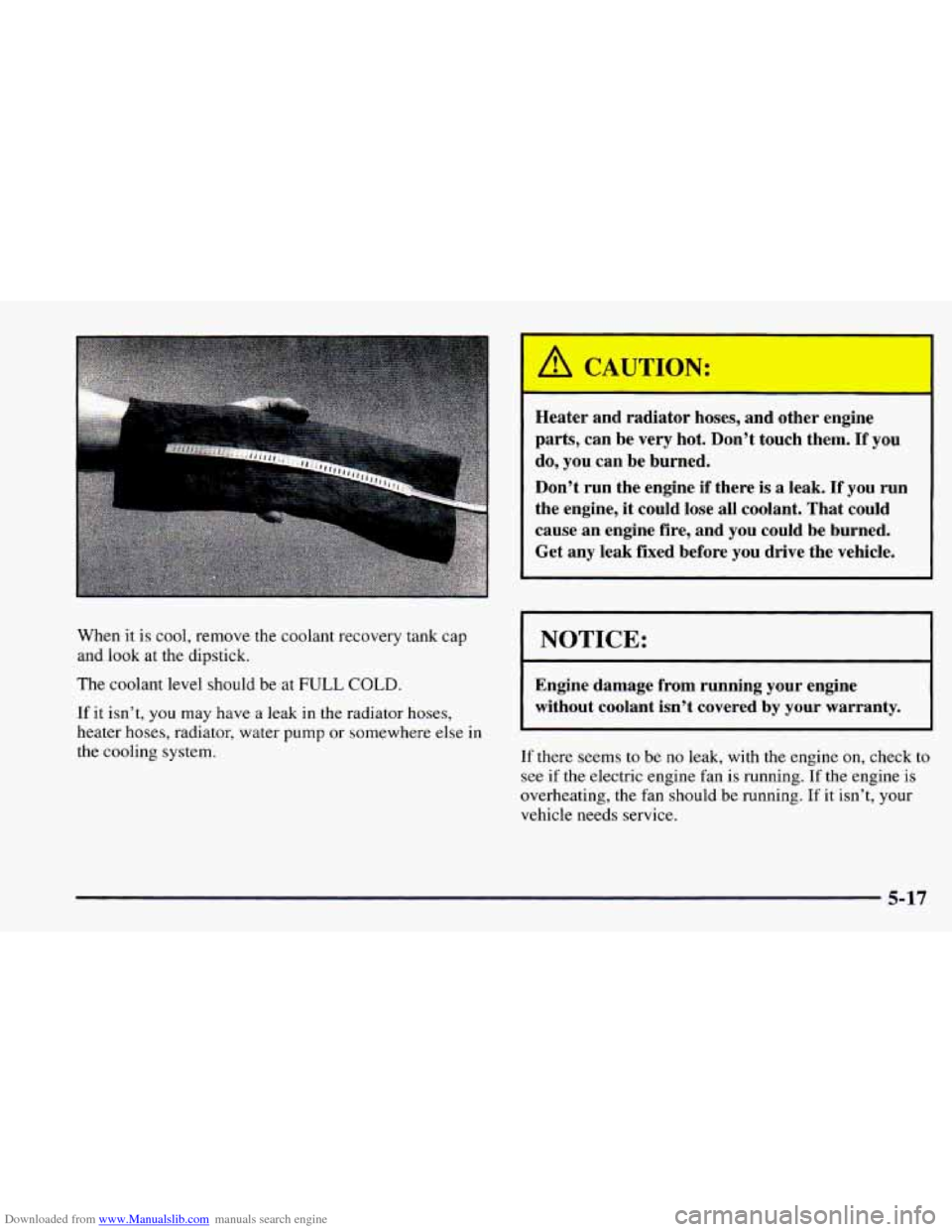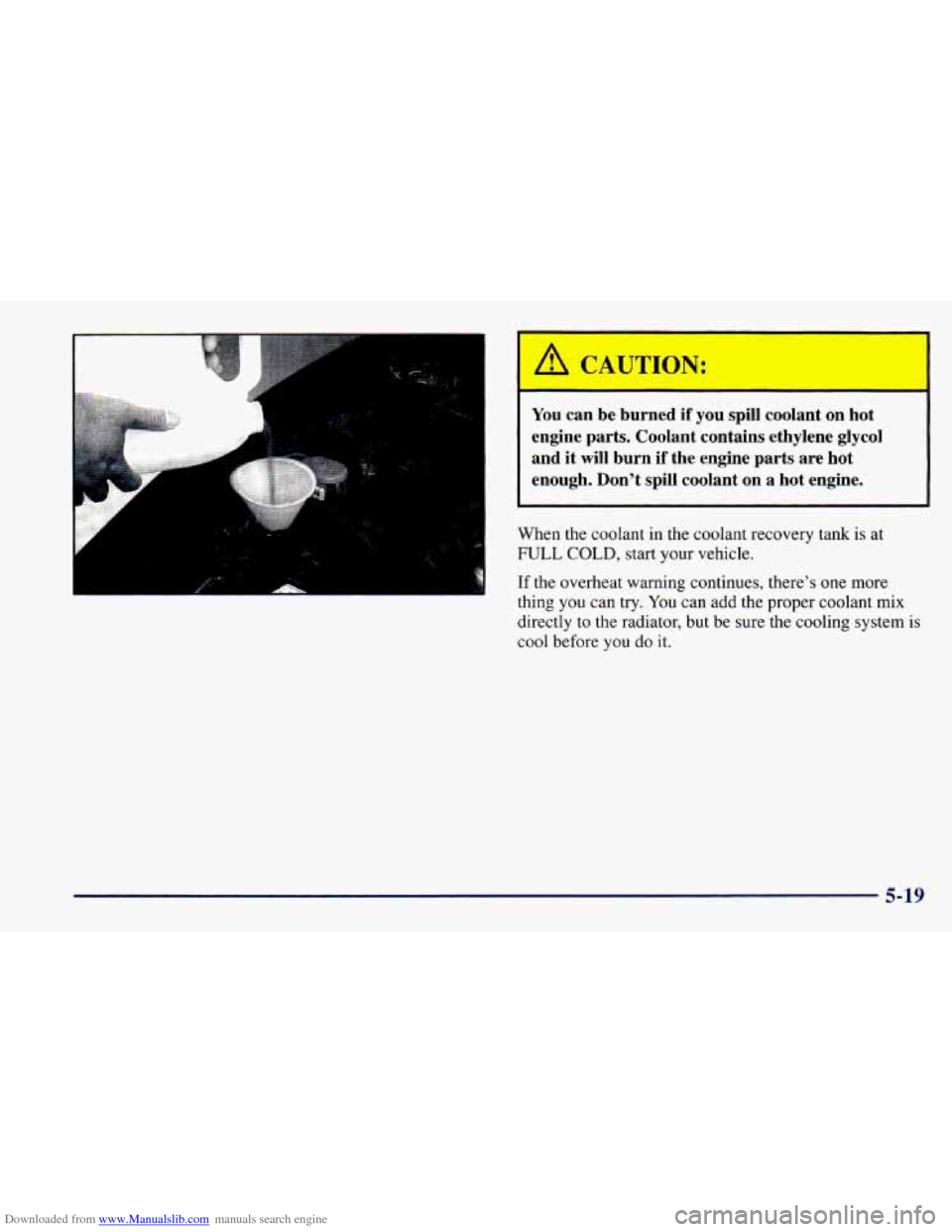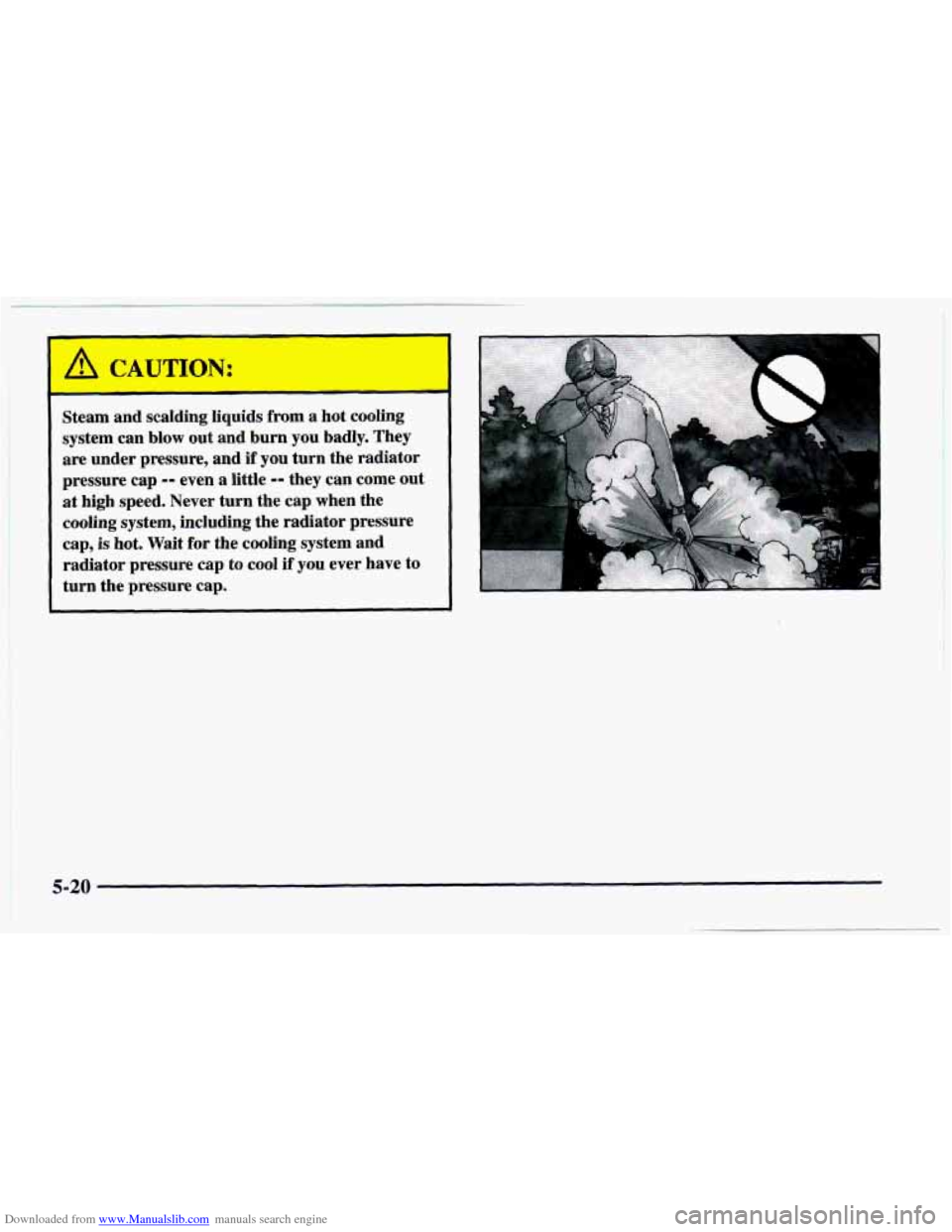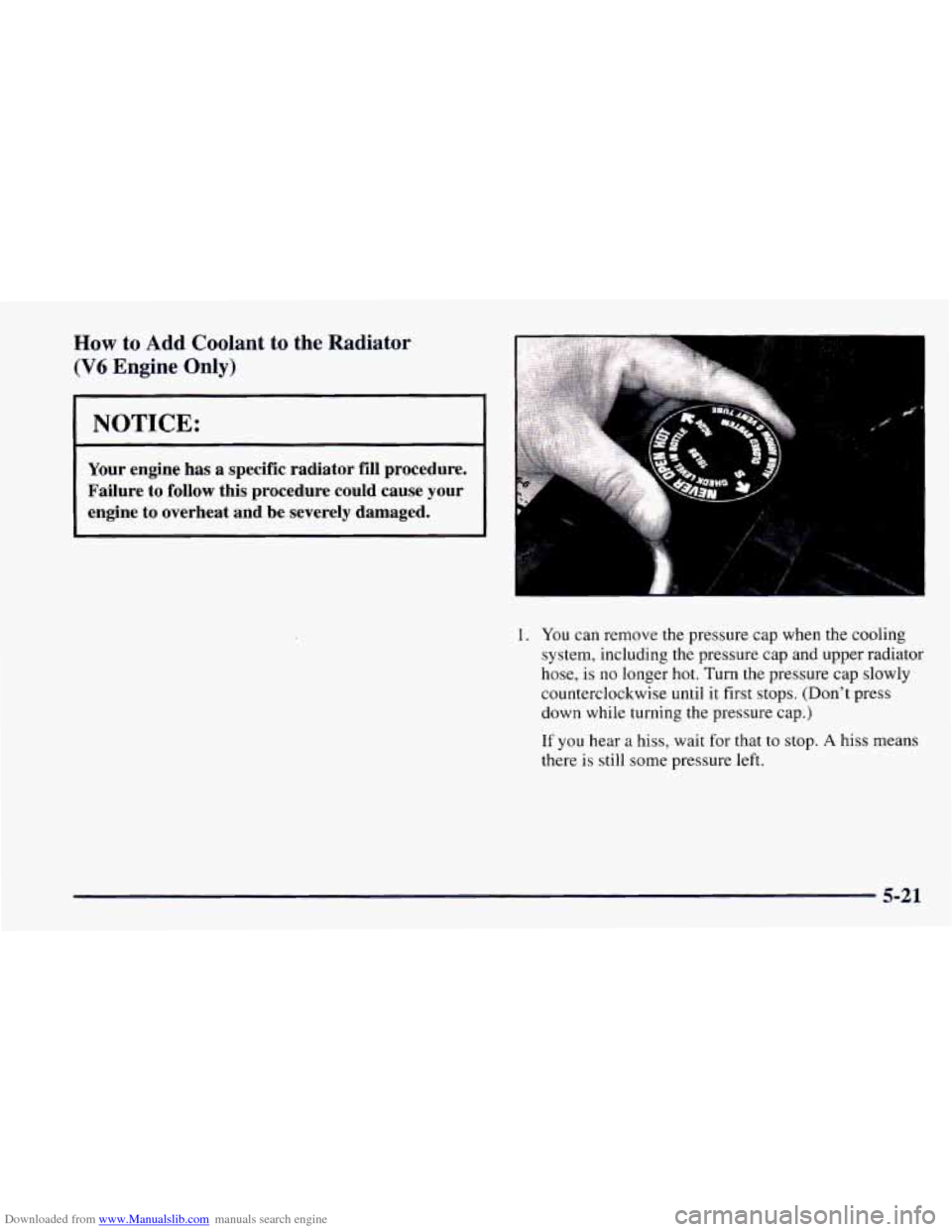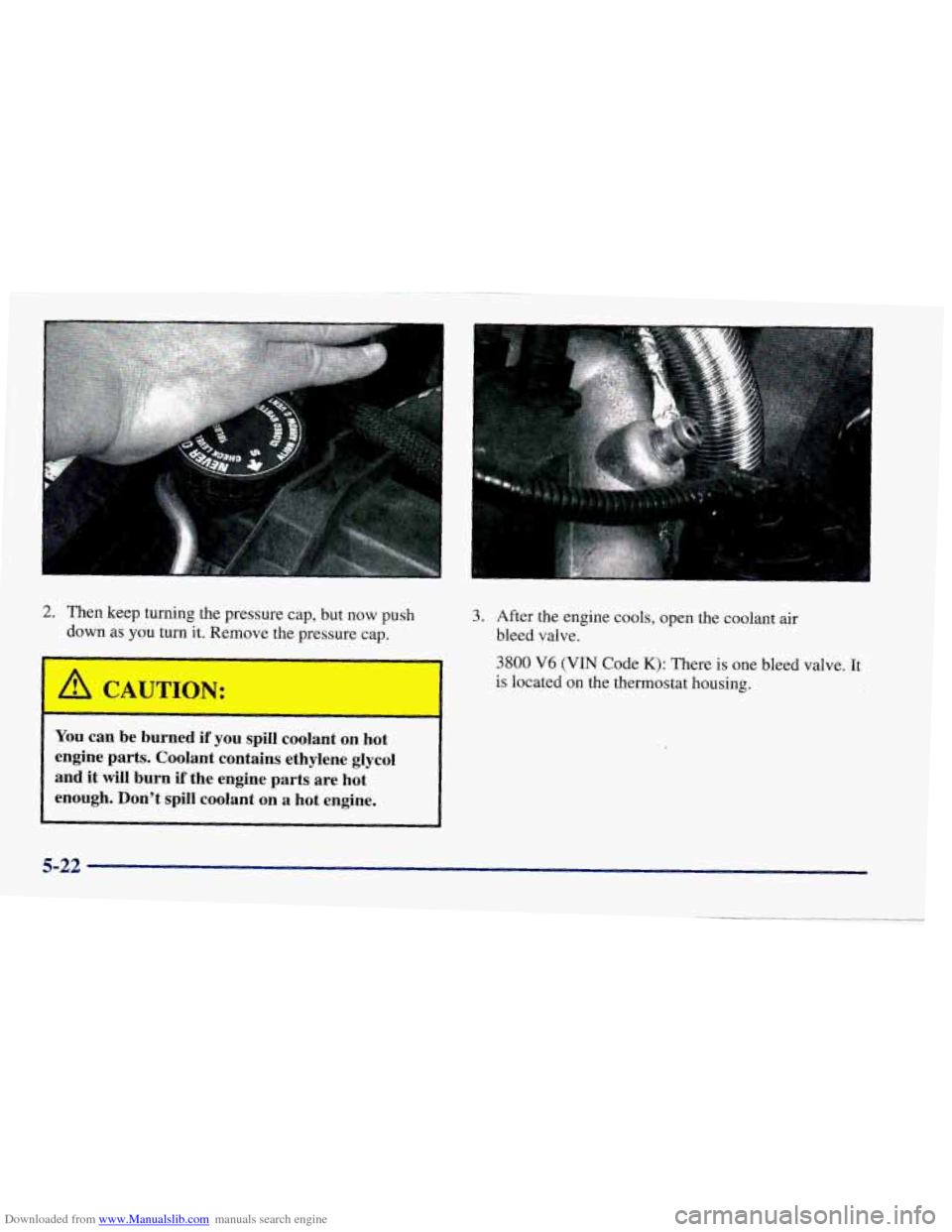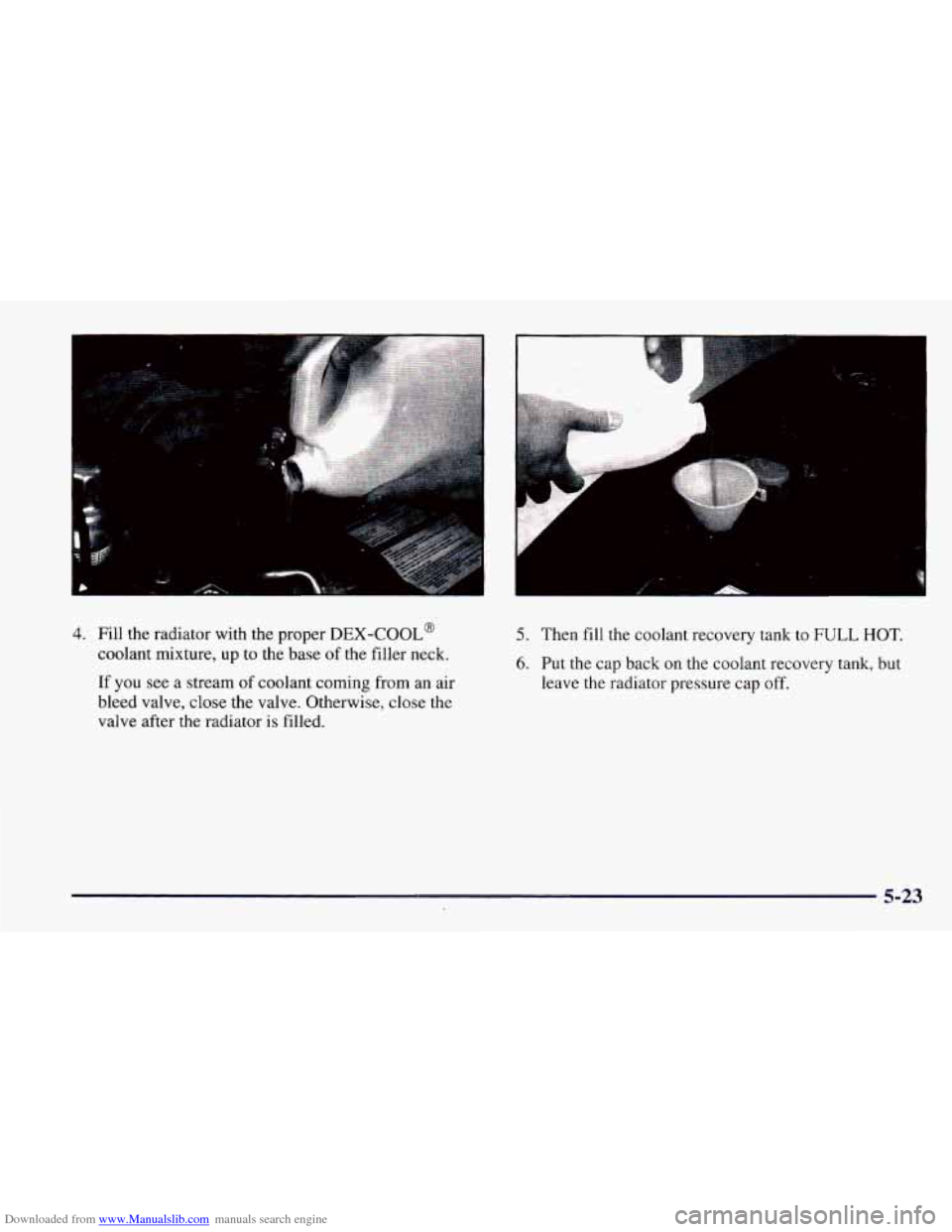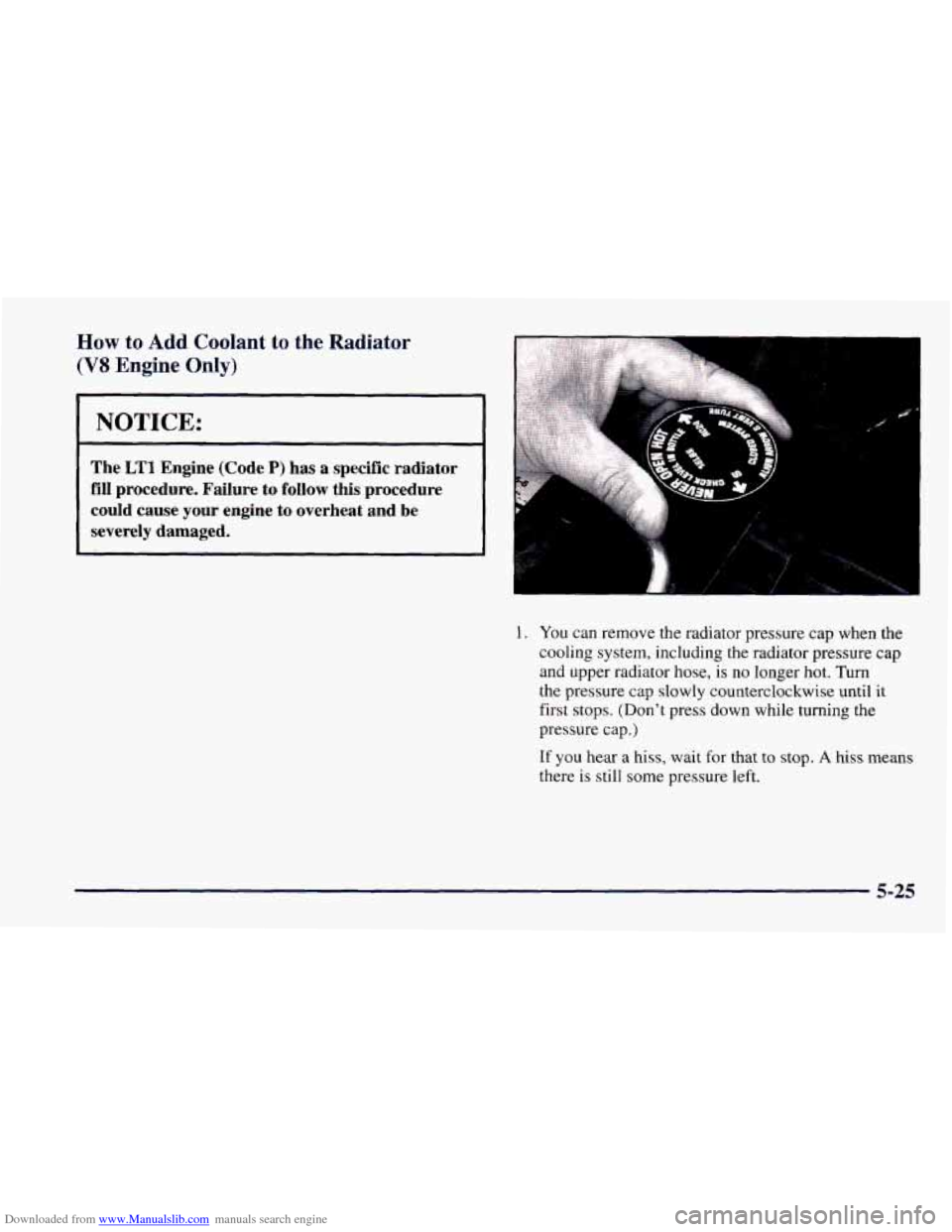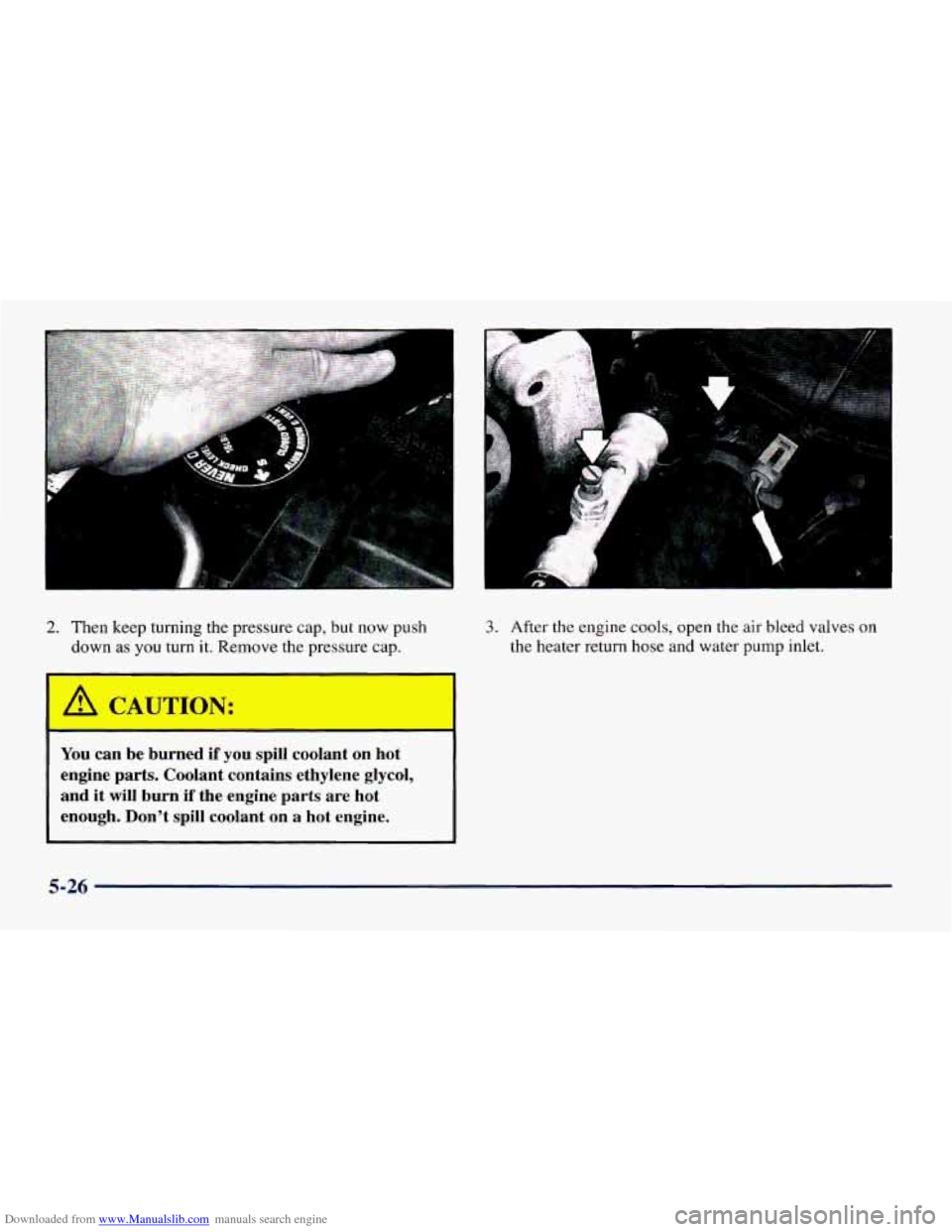CHEVROLET CAMARO 1997 4.G Owners Manual
CAMARO 1997 4.G
CHEVROLET
CHEVROLET
https://www.carmanualsonline.info/img/24/8066/w960_8066-0.png
CHEVROLET CAMARO 1997 4.G Owners Manual
Trending: load capacity, spare tire location, heater, wheel size, CD changer, manual transmission, engine coolant
Page 221 of 404
Downloaded from www.Manualslib.com manuals search engine When it is cool, remove the coolant recovery tank cap
and look at the dipstick.
The coolant level should be
at FULL COLD.
If it isn’t, you may have a leak in the radiator hoses,
heater hoses, radiator, water pump or somewhere
else in
the cooling system.
Heater and radiator hoses, and other engine
parts, can be very hot. Don’t touch them.
If you
do, you can be burned.
Don’t run the engine if there
is a leak. If you run
the engine, it could lose all coolant. That could
cause an engine fire, and you could be burned.
Get any leak fixed before you drive the vehicle.
NOTICE:
Engine damage from running your engine
without coolant isn’t covered
by your warranty.
If there seems to be no leak, with the engine on, check to
see if the electric engine fan is running. If the engine is
overheating, the fan should be running. If it isn’t, your
vehicle needs service.
5-17
Page 222 of 404
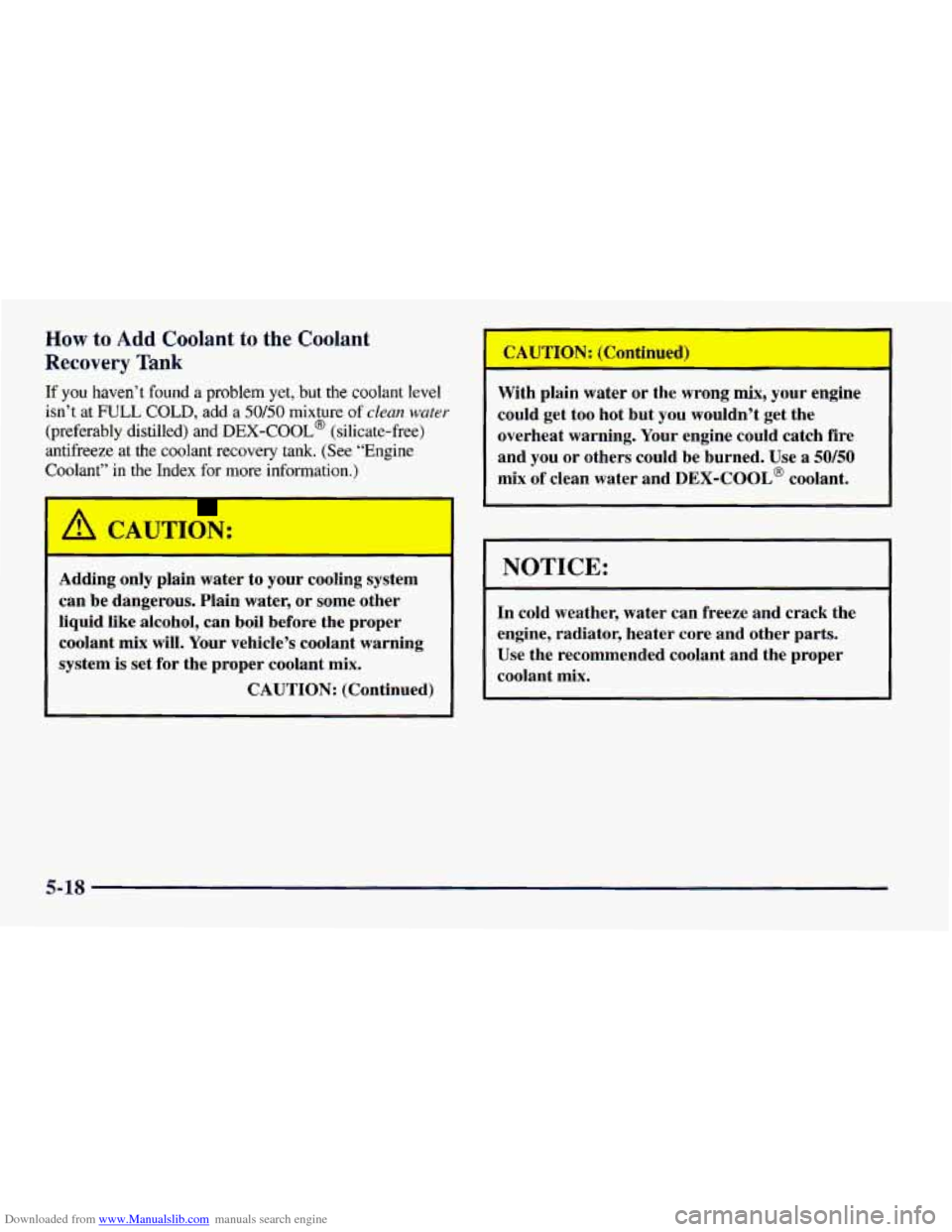
Downloaded from www.Manualslib.com manuals search engine How to Add Coolant to the Coolant
Recovery Tank
If you haven’t found a problem yet, but the coolant level
isn’t at FULL COLD, add a
50/50 mixture of clean water
(preferably distilled) and DEX-COOL@ (silicate-free)
antifreeze
at the coolant recovery tank. (See “Engine
Coolant’’ in the Index for more information.)
A CAUTION:
Adding only plain water to your cooling system
can be dangerous. Plain water, or some other
liquid like alcohol, can boil before the proper
coolant mix will. Your vehicle’s coolant warning
system
is set for the proper coolant mix.
CAUTION: (Continued)
With plain water or the wrong mix, your engine
could get
too hot but you wouldn’t get the
overheat warning. Your engine could catch fire
and you or others could be burned.
Use a 50/50
mix of clean water and DEX-COOL@ coolant.
I NOTICE:
~
In cold weather, water can freeze and crack the
engine, radiator, heater core and other parts.
Use the recommended coolant and the proper
coolant mix.
5-18
Page 223 of 404
Downloaded from www.Manualslib.com manuals search engine You can be burned if you spill coolant on hot
engine parts. Coolant contains ethylene glycol
and it
will burn if the engine parts are hot
enough. Don't spill coolant on a hot engine.
When the coolant in the coolant recovery tank is at
FULL COLD, start your vehicle.
If the overheat warning continues, there's one more
thing you can try.
You can add the proper coolant mix
directly
to the radiator, but be sure the cooling system is
cool before you do it.
5-19
Page 224 of 404
Downloaded from www.Manualslib.com manuals search engine A CAUTION:
Steam and scalding liquids from a hot cooling
system can blow out and burn you badly. They
are under pressure, and
if you turn the radiator
pressure cap
-- even a little -- they can come out
at high speed. Never turn the cap when the
cooling system, including the radiator pressure
cap,
is hot. Wait for the cooling system and
radiator pressure
cap to cool if you ever have to
turn the pressure cap.
5-20
Page 225 of 404
Downloaded from www.Manualslib.com manuals search engine How to Add Coolant to the Radiator
(V6 Engine Only)
1 NOTICE:
Your engine has a specific radiator fill procedure.
Failure to follow this procedure could cause your engine
to overheat and be severely damaged.
1. You can remove the pressure cap when the cooling
system, including the pressure cap and upper radiator
hose,
is no longer hot. Turn the pressure cap slowly
counterclockwise until it first stops. (Don’t press
down while turning the pressure cap.)
If you hear a hiss, wait for that to stop. A hiss means
there
is still some pressure left.
5-2 1
Page 226 of 404
Downloaded from www.Manualslib.com manuals search engine 2. Then keep turning the pressure cap, but now push
down as
you turn it. Remove the pressure cap.
A CAUTION:
You can be burned if you spill coolant on hot
engine parts. Coolant contains ethylene glycol
and it will burn
if the engine parts are hot
enough. Don’t spill coolant on a hot engine.
J
3. After the engine cools, open the coolant air
bleed valve.
3800 V6 (VIN Code K): There is one bleed valve. It
is located on the thermostat housing.
5-22
Page 227 of 404
Downloaded from www.Manualslib.com manuals search engine 4. Fill the radiator with the proper DEX-COOL'
coolant mixture, up to the base of the filler neck.
If you see a stream of coolant coming from an air
bleed valve, close the valve. Otherwise, close the
valve after the radiator
is filled.
5. Then fill the coolant recovery tank to FULL HOT.
6. Put the cap back on the coolant recovery tank, but
leave the radiator pressure cap off.
5-23
Page 228 of 404
Downloaded from www.Manualslib.com manuals search engine 3
7. Start the engine and let it run until you can feel the
upper radiator hose getting hot. Wdtch out for the
engine fan(
s).
filler neck may be lower. If the level is lower, add
more
of the proper DEX-COOL@ coolant mixture
through the filler neck
until the level reaches the
base
of the filler neck.
8. By this time, the coolant level inside the radiator
9. Then replace the pressure cap. At any time during
this procedure if coolant begins to
flow out of the
filler neck, reinstall the pressure cap. Be sure the
arrows
on the pressure cap line up like this.
5-24
Page 229 of 404
Downloaded from www.Manualslib.com manuals search engine How to Add Coolant to the Radiator
(VS Engine Only)
I NOTICE:
The LT1 Engine (Code P) has a specific radiator
fill procedure. Failure to follow this procedure could cause your engine to overheat and be
severely damaged.
1. You can remove the radiator pressure cap when the
cooling system, including the radiator pressure cap
and upper radiator hose, is no longer hot. Turn
the pressure cap slowly counterclockwise until
it
first stops. (Don't press down while turning the
pressure cap.)
If you hear a hiss, wait for that to stop. A hiss means
there is still some pressure left.
5-25
Page 230 of 404
Downloaded from www.Manualslib.com manuals search engine i
2. Then keep turning the pressure cap, but now push
down as you turn it. Remove the pressure cap.
3. After the engine cools, open the air bleed valves on
the heater return hose and water pump inlet.
A CAUTION: I
You can be burned if you spill coolant on hot
engine parts. Coolant contains ethylene glycol,
and it will burn if the engine parts are hot
enough. Don't spill coolant on
a hot engine.
5-26
Trending: fuel cap, keyless entry, fuse chart, dimensions, fuel pump, manual transmission, language
